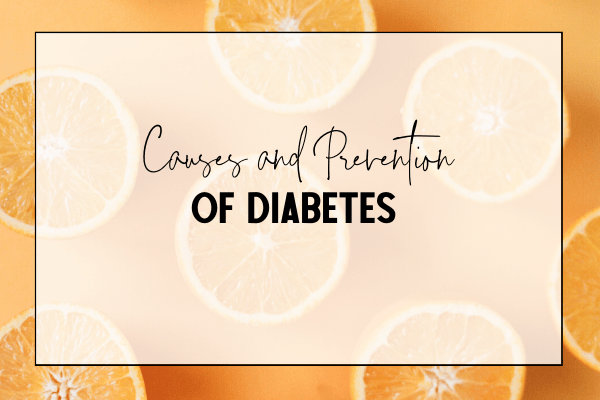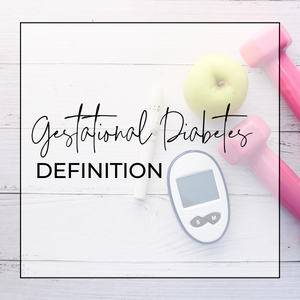
To avoid type 2 diabetes, it is helpful to learn the causes and prevention of diabetes. There are steps you can take now to delay or prevent entirely the onset of type 2 diabetes. Given the physical, emotional, and financial toll diabetes takes on us and our bodies, learning how you can be proactive can have a dramatic impact on your health.
Type 2 diabetes is caused by insulin resistance. This means that there is plenty of insulin in your body, it’s just not being recognized by the cells. As a result, the sugar in the blood (glucose) can’t get into your cells where it can be used as energy. But, actually, the ball is in your court. You’ve probably heard it before, but it’s worth repeating. Lifestyle factors such as diet, physical activity, and sleep play a big role in diabetes prevention.
To dive into the causes and prevention of diabetes, let’s take each of these lifestyle factors one at a time.
Prevention of Diabetes: Diet
Diet has the biggest impact on diabetes prevention. And if you only picked 1 thing to focus on from the 3 listed above, diet should definitely be your priority. If you are overweight/obese, a heathy diet designed to help you lose weight can help prevent diabetes. A study that just crossed my desk showed that among adults with prediabetes, weight gain and increases in waist circumference raised diabetes risk.1 Weight loss and reductions in waist circumference lowered the risk of diabetes.
The main goal is to reduce insulin resistance through diet. Before you jump to any conclusions, I am NOT recommending a keto diet. Carbs are not the enemy. Carbs are the best energy source for our bodies. The key is to choose complex carbs over simple carbs. Whole grains, fruits, and vegetables (both starchy and non-starchy) are excellent choices. Try to choose foods as close to their natural state as possible. Diets high in saturated fats have also been associated with higher levels of insulin resistance.2 The most common sources of saturated fat include fatty sources of meat (beef & pork), dark poultry meat, poultry skin, high-fat dairy products (whole milk, cream, and cheese), tropical oils, and lard.
Prevention of Diabetes: Physical Activity
Physical activity helps with weight loss, which reduces insulin resistance. But it impacts insulin resistance and blood sugar levels quickly, which means there must be something else going on other than helping with weight loss. A single session of moderate intensity exercise can increase the rate at which glucose is taken up by the cells by at least 40%.3 And the benefit doesn’t end when you stop working out. Insulin sensitivity improves for up to 16 hours afterwards. This is seen in both healthy individuals and those who have already been diagnosed with type 2 diabetes.4 So, to summarize, there are multiple mechanisms at play that help improve insulin sensitivity.
Prevention of Diabetes: Sleep
This one might come as a surprise, but the amount of sleep you get per night makes a big difference in your body’s ability to process glucose. One of the big ways to improve the quality of sleep is a healthy diet and physical activity! Avoiding caffeinated beverages late in the day or in the evening can also make it easier to fall asleep. Creating a relaxing bedtime routine can also aid in sleep quality.
When thinking about the cause and prevention of diabetes, inflammation also plays a role.5 Fortunately, the suggestions made to help improve diet will also help with inflammation. Green leafy vegetables, fruits, nuts, and healthy oils can all improve inflammation.
Sources:
(1) Hu H, et al. Clin Nutr: 2019;doi: 10.1016/j.clnu.2019.12.023.
(2) Maron, et al. Circulation: 1991, vol 84, no. 5.
(3) Ross R. Does Exercise Without Weight Loss Improve Insulin Sensitivity. Diabetes Care. 2003: 26(3): 944-945.
(4) Borghouts LB, Keizer HA. Exercise and Insulin Sensitivity: A Review. Int J Sports Med. 2000: 21(1): 1-12.
(5) Venkatasamy, et al. Journal of Clinical and Diagnostic Research: 2013 Aug Vol-7(8): 1764-1766




